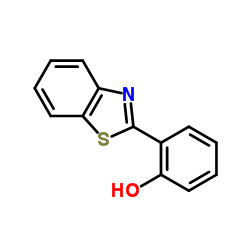Active role of proton in excited state intramolecular proton transfer reaction.
Junghwa Lee, Chul Hoon Kim, Taiha Joo
Index: J. Phys. Chem. A 117(7) , 1400-5, (2013)
Full Text: HTML
Abstract
Proton transfer is one of the most important elementary reactions in chemistry and biology. The role of proton in the course of proton transfer, whether it is active or passive, has been the subject of intense investigations. Here we demonstrate the active role of proton in the excited state intramolecular proton transfer (ESIPT) of 10-hydroxybenzo[h]quinoline (HBQ). The ESIPT of HBQ proceeds in 12 ± 6 fs, and the rate is slowed down to 25 ± 5 fs for DBQ where the reactive hydrogen is replaced by deuterium. The results are consistent with the ballistic proton wave packet transfer within the experimental uncertainty. This ultrafast proton transfer leads to the coherent excitation of the vibrational modes of the product state. In contrast, ESIPT of 2-(2'-hydroxyphenyl)benzothiazole (HBT) is much slower at 62 fs and shows no isotope dependence implying complete passive role of the proton.
Related Compounds
| Structure | Name/CAS No. | Molecular Formula | Articles |
|---|---|---|---|
 |
o-(2-Benzothiazolyl)phenol
CAS:3411-95-8 |
C13H9NOS |
|
Modulation of firefly luciferase stability and impact on stu...
1991-07-22 [Gene 103(2) , 171-7, (1991)] |
|
The effect of hydrogen bonding on the excited-state proton t...
2012-07-07 [Phys. Chem. Chem. Phys. 14(25) , 9016-25, (2012)] |
|
A highly selective fluorescent probe for fast detection of h...
2012-11-14 [Chem. Commun. (Camb.) 48(88) , 10871-3, (2012)] |
|
Accessing the long-lived triplet excited states in bodipy-co...
2012-07-20 [J. Org. Chem. 77(14) , 6166-78, (2012)] |
|
New excited state intramolecular proton transfer (ESIPT) dye...
2012-10-09 [Chem. Commun. (Camb.) 48(78) , 9720-2, (2012)] |